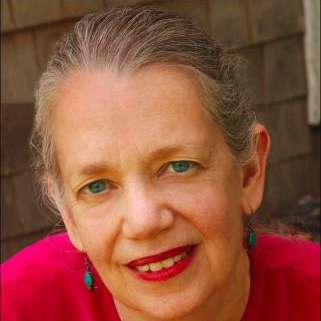Conrad Susa’s Transformations is the ideal chamber opera for brilliant young singers. Premiered in 1973, the two-hour work for eight singers and eight instrumentalists is based on Pulitzer Prize–winner Anne Sexton’s book of the same name. Witty, edgy and full of Freudian insight, the libretto solidly inhabits the modern world by updating the dark and bizarre world of the Brothers Grimm fairy tales. The music is equally droll, contemporary and is demandingly virtuosic – just the thing for the Merola Opera Program singers.
Merola lays claim to being the foremost training program for young opera professionals in the world. The young singers who grace the summer stage are likely to be gracing the stages of the world’s great opera houses in the near future, and this year’s singers are no exception. But what makes these singers especially engaging and pleasurable to listen to is their youth and the singular freshness of their voices. This was achingly true of the sweet and pure soprano of Teresa Castillo, who sang the roles of various Princesses and Gretel.
Three women and five men, the singers negotiated the difficulties of Transformations with aplomb. Even when lovely soprano Shannon Jennings, who sang the role of Anne Sexton, “a middle-aged witch” and “vulnerable beauty slipping into a nightmare”, had to forego singing in the second half due to illness. She, or rather her voice, was replaced by Mary Evelyn Hangley, who sang from the pit – powerfully, wonderfully – while Jennings acted and lip-synced the role on stage. Soprano Chelsey Geeting excellently rounded out the trio of female voices as the Good Fairy and Witch, providing the women’s lower vocal timbre.
The opera consists of ten stories divided between two acts. The characters of the stories shift between the singers, so that the Prince in one story is the Fox in another and Hansel in another. Stringing the stories together is the Anne Sexton/Witch character who provides an explanatory prologue to each tale. This explanation is always dark, frequently sexually tinged and often slightly rancid.
“Inside many of us is a small old man, a monster of despair,” she sings about the doppelgänger she finds in Rumplestiltskin. The story of Rapunzel becomes that of an older woman’s sexual longing for a younger woman. Briar Rose, or Sleeping Beauty, describes the numbing control of a father over his daughter’s sexuality. Hansel and Gretel is the story of a mother’s devouring love for her children.
Alleviating the dank obsessions of the narrator is Sexton’s ironic wit, so characteristically 1950s America: “blood began to boil up like Coca-Cola”, “Without Thorazine / or benefit of psychotherapy / Iron Hans was transformed /”, “to die and never see Brooklyn!” Susa’s music is equally amusing, with its exotic ensembles rife with dissonances, its jazzy riffs and bluesy chanteuse song, peppered with the occasional tango and foxtrot. Neal Goren smartly directed the chamber group of clarinet, sax, trumpet, tombone, bass, percussion and keyboards.
A good portion of the opera’s singing is done a cappella, including some very tight ensemble work. The male quartet of dwarves in Snow White was daringly negotiated by tenors Boris Van Druff and Brian Michael Moore, lone baritone Andrew Manea and monster big-voiced bass Matthew Anchel. The tenors along with Isaac Frishman, who sang the various Princes and Hansel, were pleasingly rounder toned, their voices’ brightness ringing out more clearly in the demanding ensemble work.
Despite the liveliness of text and music, one of the theatrical difficulties of Transformations is that many of the original poems are long third-person narratives: they are stories told rather than events acted in real time. Susa handled that problem by having the characters sing the third-person parts as if each were telling his or her story directly.
Breaking through the stand-and-deliver presentation that often plagues both storytelling and opera is a problem for the director. Director Roy Rallo did an adequate job in overcoming the opera’s potential drift into kinetic stasis, but he was not helped by Marsha Ginsberg’s rather two-dimensional sets, which in the first-half lined up a set of mismatched pieces of furniture across a narrow strip of stage. Though the various pieces of furniture represented different scenes or stories, their placement narrowed the singers’ movements.
The second half opened up on a larger stage, which used something like gray bin bags to create the effect of a cave. Though a wry comment on the sub-conscious, the gray plastic walls never stopped looking like bin bags. Even so, the music and the singing were wonderful, as was the venue, the Concert Hall at San Francisco Conservatory of Music, where Conrad Susa served for many years as a professor of composition.


